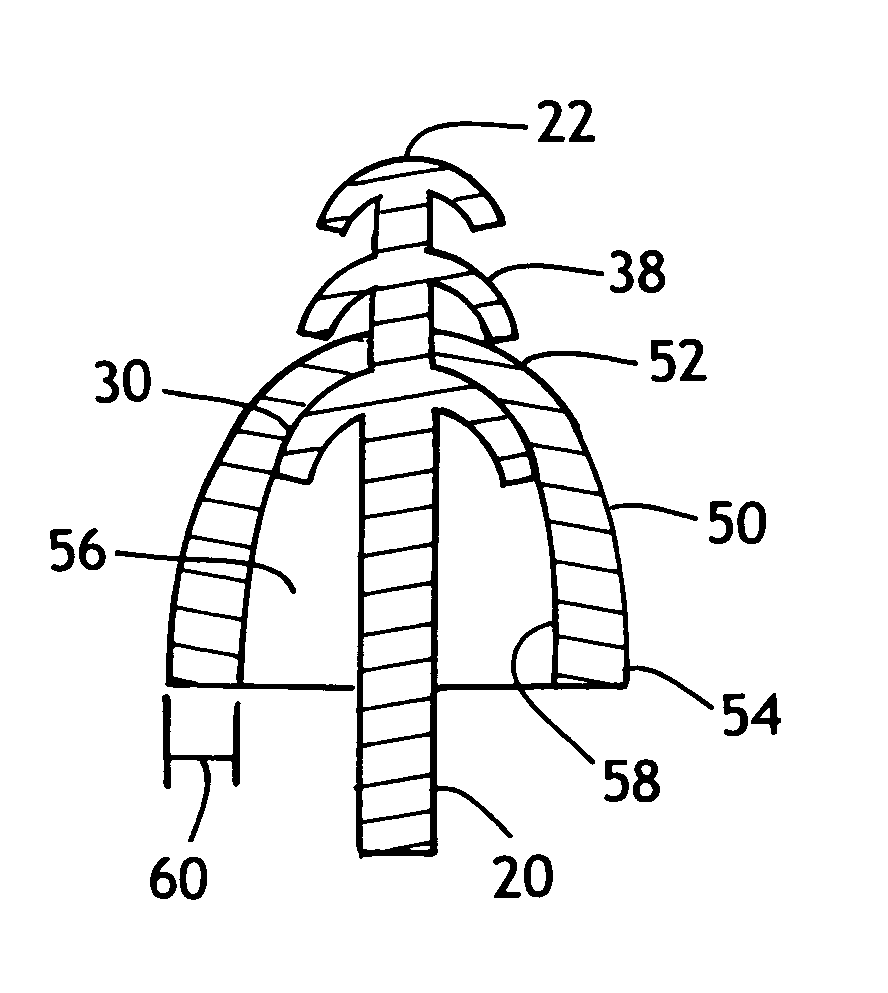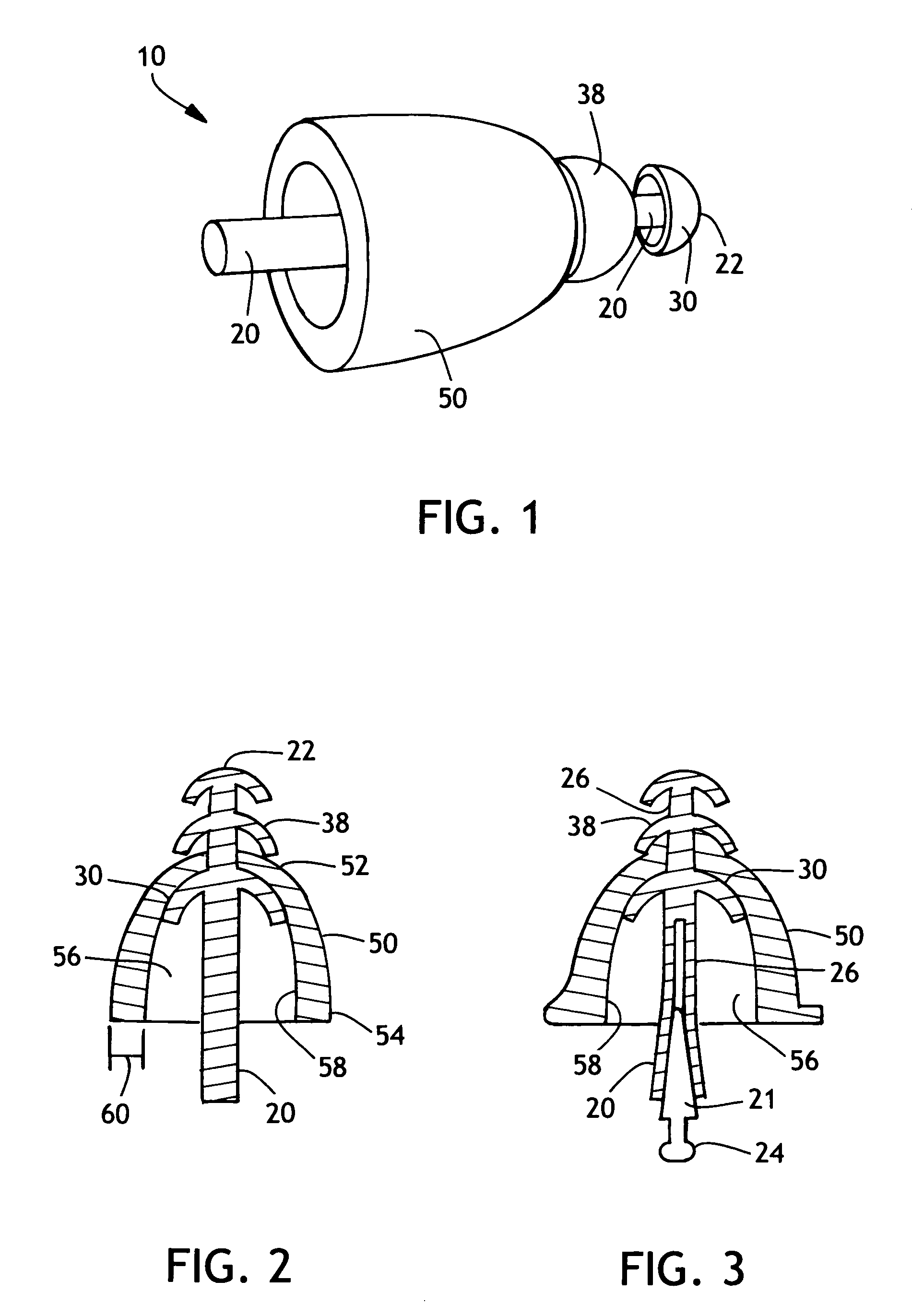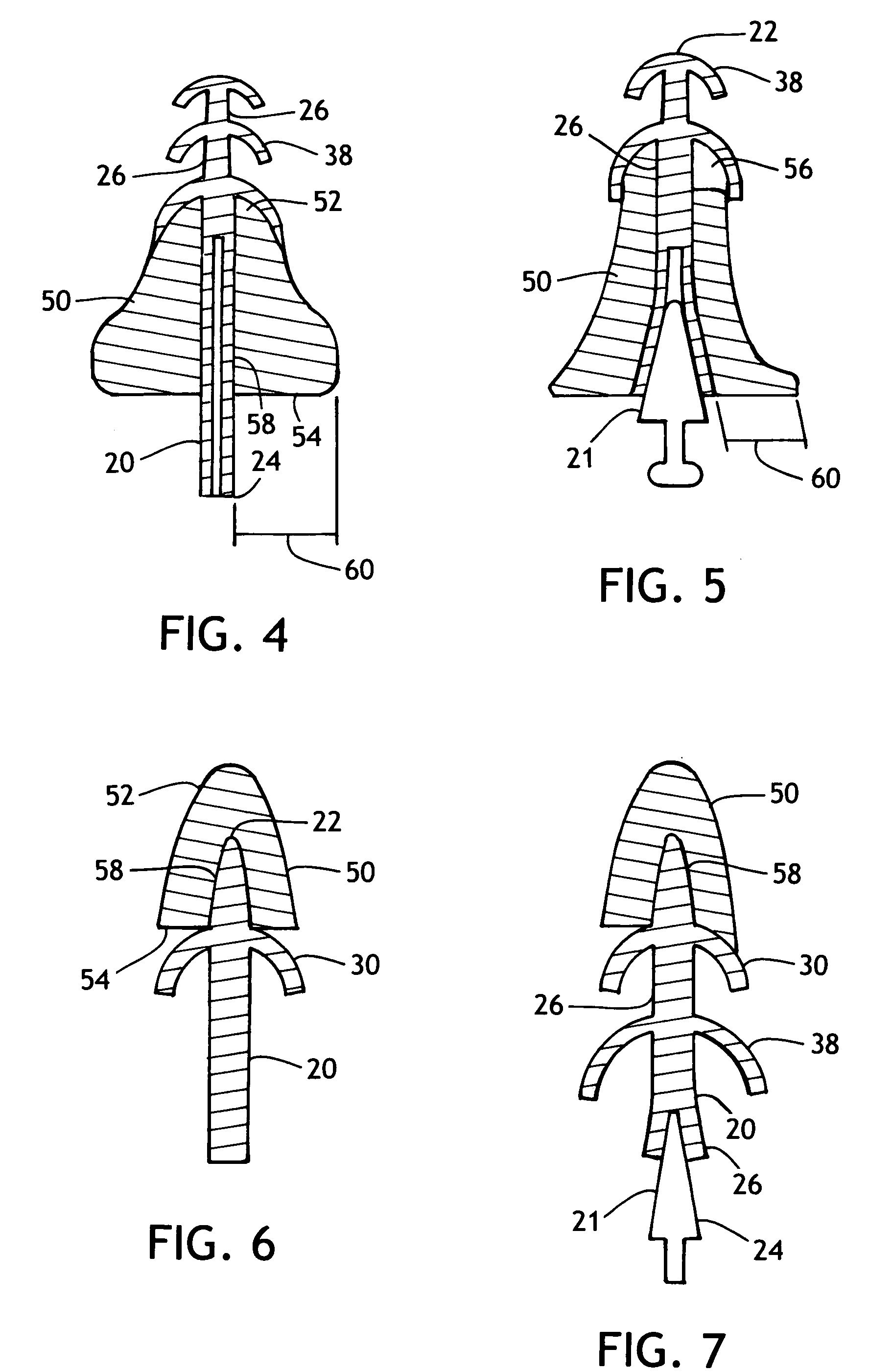Self-conforming sound attenuation earplug
a self-conforming, ear plug technology, applied in stethoscopes, medical science, ear treatment, etc., can solve the problems of inconvenient use, increased labor intensity, and increased difficulty in ensuring worker compliance with safety rules
- Summary
- Abstract
- Description
- Claims
- Application Information
AI Technical Summary
Benefits of technology
Problems solved by technology
Method used
Image
Examples
Embodiment Construction
[0027]Referring now to the drawings, there is depicted a self-conforming sound attenuation earplug 10 for location in an ear canal 12. Particularly in FIG. 10, there is seen outer ear 13 joined to the portion of the ear canal 12 through which the earplug 10 is inserted for use, and where the ear drum (not seen) is located at the other end of the ear canal spaced from the earplug when inserted into the ear canal. Earplug 10 includes a stem 20, a support 30, and a shell 50. Stem 20 is made of a stem material and includes a stem ear end 22 and an opposite stem user end 24. Stem 20 may include a stem extension 21 (i.e., FIGS. 3, 5, and 7), for example, to aid in insertion of earplug 10 or locating with a mating device (not shown). Extension 21 may be integral with stem 20, formed independent of stem 20 and then joined together, be a male engagement end (as shown) which plugs into a mating female member (e.g., an ear clip or an ear muff, not shown), or be a female engagement end which pl...
PUM
 Login to View More
Login to View More Abstract
Description
Claims
Application Information
 Login to View More
Login to View More - R&D
- Intellectual Property
- Life Sciences
- Materials
- Tech Scout
- Unparalleled Data Quality
- Higher Quality Content
- 60% Fewer Hallucinations
Browse by: Latest US Patents, China's latest patents, Technical Efficacy Thesaurus, Application Domain, Technology Topic, Popular Technical Reports.
© 2025 PatSnap. All rights reserved.Legal|Privacy policy|Modern Slavery Act Transparency Statement|Sitemap|About US| Contact US: help@patsnap.com



